Deep Rock Galactic review
“And my pick!”
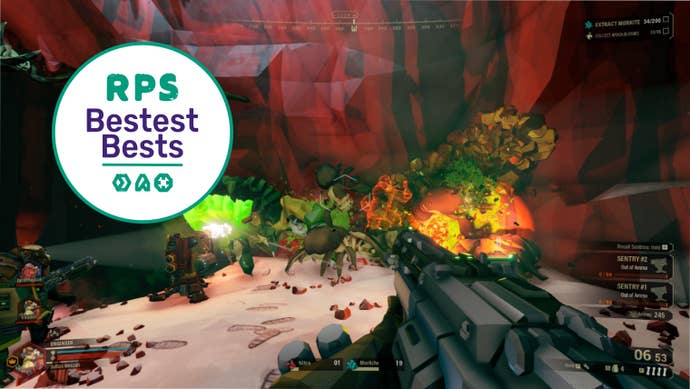
I have seven seconds to bypass twenty feet of sheer rock face to reach a subterranean escape pod before it propels itself back up through the planet’s surface, leaving my dwarven engineer trapped in a network of dark tunnels teeming with screeching alien insects. After a seeming eternity of desperate scrambling, I’ve made it to the cavern containing the escape pod, my heart sinking as I see how high up it is. My platform-creating gun has a single shot left, and I’ve nowhere near enough time to dig my way up. It’s then I spot it: A geyser venting trails of steam that can propel my dwarf into the air. I take the punt. It lifts me halfway up. My final, desperate platform shot does the rest. I leave with a shiny haul of gems, and roughly two seconds to spare.
The high level concept for this game is Left 4 Dead meets Minecraft, both undeniably influential games that, personally, I don’t have much enthusiasm for. Let me tell you why Deep Rock Galactic - a game that the phrase ‘more than the sum of its parts’ could have been invented for - is an absolute gem.
That desperate rush I described above was the exfiltration phase. You’ve explored the tunnels, fought back the giant bugs trying to stop you. You’ve mined the requisite minerals, or stolen some alien eggs for research, or slain a few giant bosses. Now, your team have five minutes to make it back to the escape pod - back through the complicated web of tunnels and ziplines and platforms you’ve laid out - before it leaves without you, failing the mission.The menagerie of skittering xenobugs, previously scattered about the caves or attacking in telegraphed waves, are now a constant, aggressive threat. More challenging still, these caves can look very different when you’re de-lunking back up the same route you just spelunked down. With nary an eagle in sight, you’d better hope that at least one of your team of diminutive explorers gave some thought to the return journey.
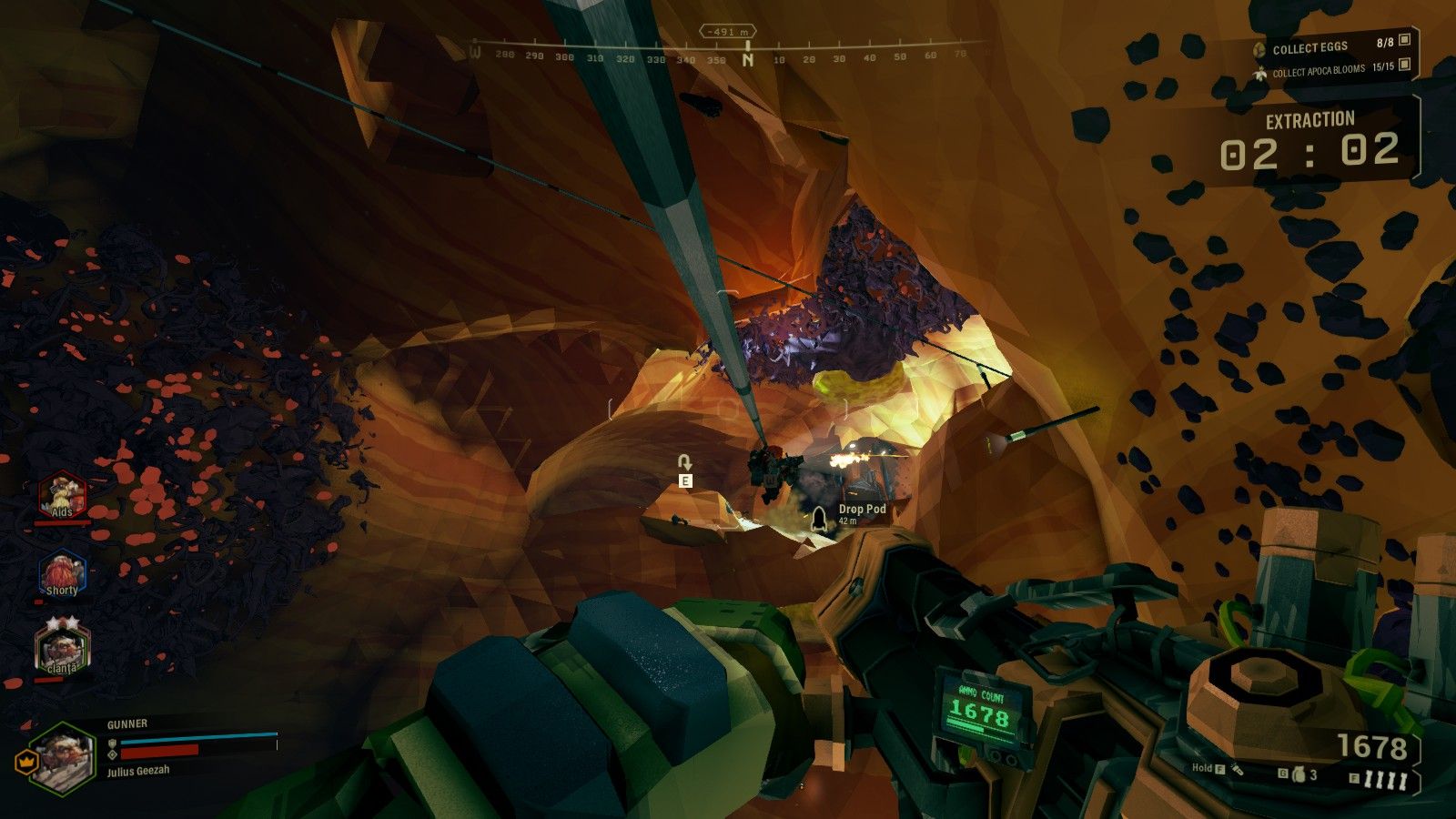
I’m making it sound more complicated than it is here, but the sense of dramatics is fully to the game’s credit. Exfiltration always feels tense and exciting, even when it isn’t all that challenging. Expeditions usually run around 15 to 25 minutes, and though you’ll get a small experience bonus even if no dwarf makes it out, you’ll still lose most of the rewards. Between missions, you’ll return to a colorful, tactile hub area that lets you spend that experience, money, and any rare minerals you mined on perks, cosmetics, and equipment upgrades. There’s two experience levels in total: a cumulative rank for you as a player, and individual ranks for each of the four classes, both with their own set of unlocks. Failing to make the exfiltration run always feels like enough of a loss to keep things tense. Plus, no dwarf wants to lose their shinies.
Before you cave dive, you’ll be able to pick one of four classes. The Gunner packs a beefy gatling that takes a moment to warm up, and can overheat if you push it too hard, but also dishes out beaucoup hurt on bugs, and can be upgraded to stun, thinning and stalling an encroaching tide. He can also shoot ziplines that can be traversed both ways, making them great for dangerous drops and unreachable nooks. Plus, he can throw down shield generators for the team to huddle inside during especially intense fights.
The Engineer has automated sentry turrets, a grenade launcher, and a shotgun. Rushing to set up those sentries as soon as you get the heads up from mission control that a swarm is approaching is every bit the thrilling Aliens homage it should be, right down to the steadily draining ammo counters. He can also shoot platforms, creating staircases and walkways for navigation, and can throw bug-distracting lures to give the team some breathing room.
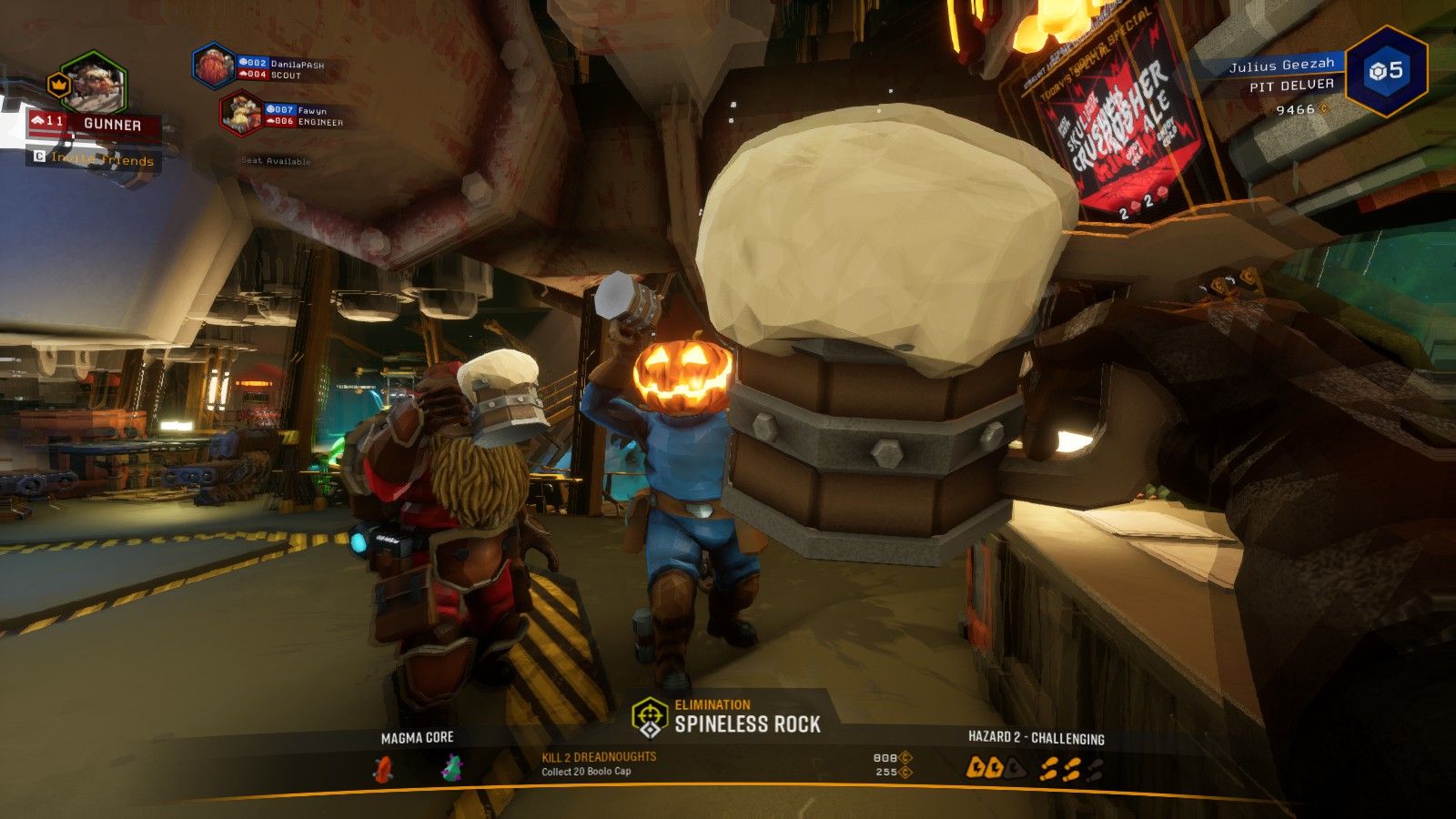
All dwarves can use their pickaxes to mine through any surface, but The Driller has a giant drill on each arm, which lets him bore huge tunnels in seconds. He also has a flamethrower, satchel charges, and some classic dwarven throwing axes. I will not dwell too long on the merits of cleaning out giant insects with a flamethrower, because it is obviously very good. Finally, there’s the Scout, whose flare gun can illuminate areas much more effectively than the standard flares all dwarves have access to, and also has a grappling hook. He’s no slouch in a scrap, either, packing a sawn-off and assault rifle.
With the exception of the Driller, whose initial fuel reserve felt too low to constantly rely on for difficult navigation, each class is both viable and enjoyable to run missions solo with. Still, It’s teamwork where Deep Rock Galactic shines brighter than a rich mineral vein. Co-op is seamless, so you can either get a team together from friends, start a mission solo and wait for others to drop in (which is almost always, the community seems very active), or a combination of both. You can also run missions solo, if you so choose. Oh, and you’re not limited to one of each class, so if you want four engineers laying down a wall of sentry guns, go for it.
You’ll be able to view the cave complexity and length of each mission before you begin, but the proc-gen is generally quite adept at providing a constant stream of novel cave layouts. Although each class has a role in fights, it’s how they compliment each other during these procedural navigation puzzles that leads to loads of lovely micro-instances of cooperation, all contributing to the overall feeling of back-slapping dwarven camaraderie.
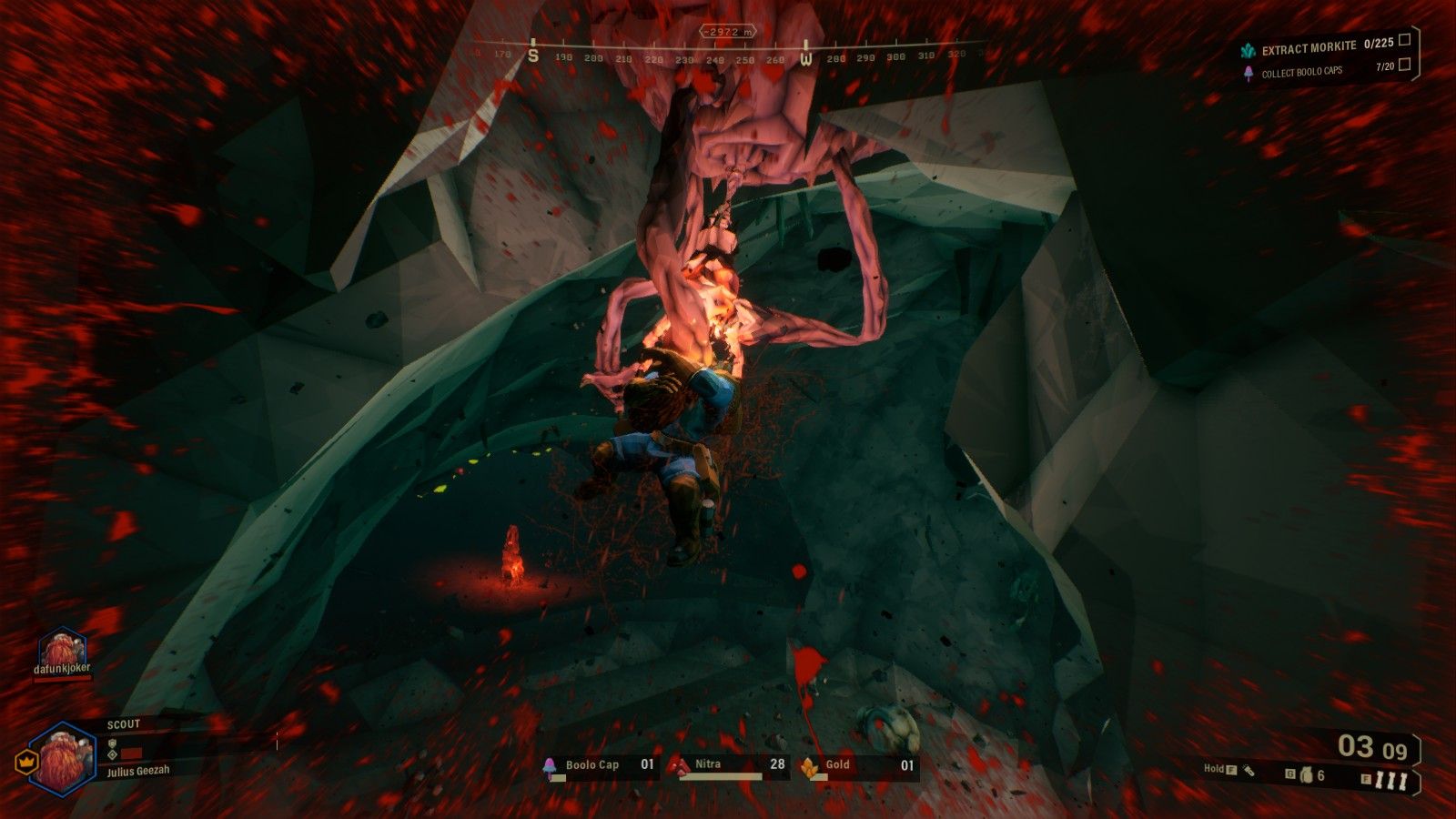
Need some light in this tunnel? I got you. Just thrown out two sentry guns, and need someone to set up the second? I got you. I’m playing as the Driller, and I’ve just spotted a tasty vein of rare upgrade minerals at the top of this vast cavern, so I’m going to tag it with my scanner, the Engineer is going to create a makeshift ledge beneath it, then the Scout can grapple up and get to work. We got each other.
You can, of course, just dig anywhere with your pickaxe, no matter which class you pick. You can make endless staircases winding through the faces of sheer cliffs, or make fatal drops trivial. Once you get the hang of it, it offers a mastery over the harsh and unknown environments that’s nothing short of intoxicating. It’s all the impossible freedom of possessing a set of wings minus the wings themselves, with dwarven ingenuity, stubborness and resolve in lieu of gracefulness.
But it’s always more efficient to work together, and it’s a lot more fun to boot. There is precisely one emote in the game, pressing ‘v’ to hold your pickaxe high and shout some variation of “rock and stone!”. You greet strangers with it when they drop into your mission in-progress, and they greet you back. Everyone does it before or after a tough fight, or when descending in the pod at the start of the mission, or reaching the escape pod at the end. You will both hear it and perform it dozens of times every time you play, and it never stops being brilliant.
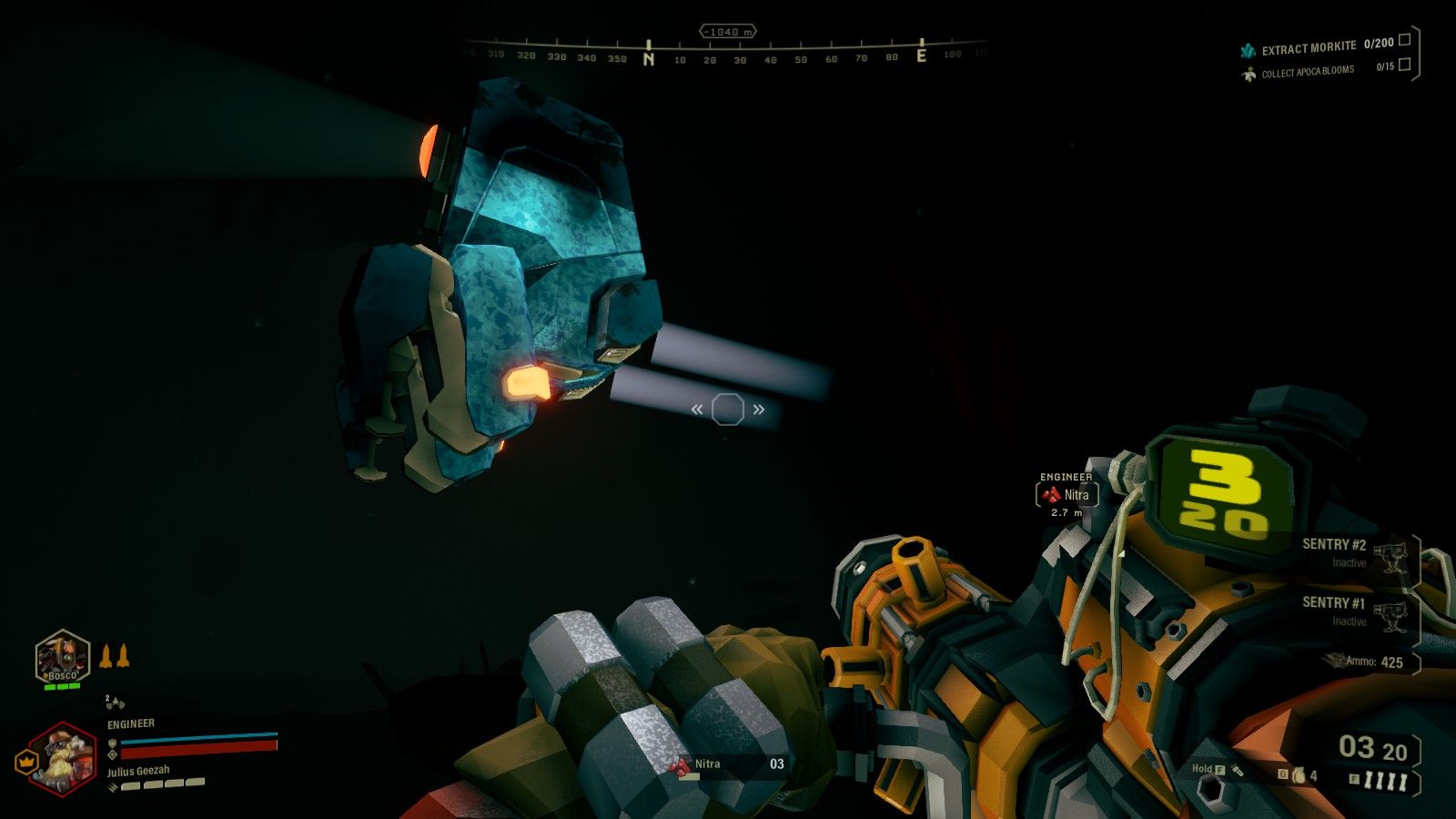
That one salute is emblematic of how so many of the game’s small details add up to something special. The extra uses you’ll find for your navigation tools, like flanking bugs to shoot their glowing thoraxes for increased damage. The way exploding bugs blow huge holes in the environment, so that once-stable platforms can suddenly become death traps.
And the dwarfiness of it all, too. Guns and explosions can deal friendly fire, but pickaxes don’t. Sometimes you’ll find a giant larvae called a ‘loot bug’ that you can bludgeon until it splatters out gems. I love the loot bug, because I love the idea of the mining dwarves discovering their first loot bug, finding out what it does, then canonically naming it a ‘loot bug’.
The interplay between constructables and a fully destructible environment, along with that reactive fuzziness that comes from colliding physics systems, contribute to the feeling that these environments are places to play in, too, rather than just levels to play through. There’s a singular feeling, somewhere between stifling claustrophobia and exploratory wonder, imparted by these labyrinthine caves. Vast and intimidating, yet host to wondrous effervescent flora and impossible alien biomes.

Most enemies make great use of the vertical space afforded to them in their giant rock halls. If something can’t fly, it can usually crawl across walls and down stalactites to ambush you. There’s enough disgusting, insectoid variety on show that it feels like these species have evolved over millennia in a biological arms race with the meddlesome longbeards that won’t stop nicking all their best rocks.
As pernicious an antagonist as the bugs is the capitalist greed that permeates the mining operation. The escape pod won’t even open until the M.U.L.E robot that carries the minerals is safely on board. For management, it’s rocks first, dwarves second, even if your escape pod has ‘No Dwarf Left Behind’ embossed on the floor. In DRG, you don’t feel like you have to grind to get to the good bits, while still feeling rewarded for progress, which feels a tad pat as an observation. But it's true, and it plays into Deep Rock Galactic’s relationship with its systems: acquisition, repetitiveness, reward cycles, progress. There’s satire, but there’s also the recognition that, well, you’re dwarves after all. Nothing makes your bearded brothers happier than hitting glittering minerals with a pickaxe.
This is brought further to the forefront by the fact that Deep Rock Galactic has all the multiple resources, cosmetic unlocks, upgrades, and victory poses you’d expect from some of gaming’s most heinously manipulative microtransaction farms, but has no microtransactions. There’s a ‘supporter pack’ available for 12 quid - half of the base game’s price - but it’s all cosmetic items. Call me a rube, but it genuinely seems like what it says on the tin: an optional buy for especially dedicated fans who wish to support a first time developer through a lengthy early access period.
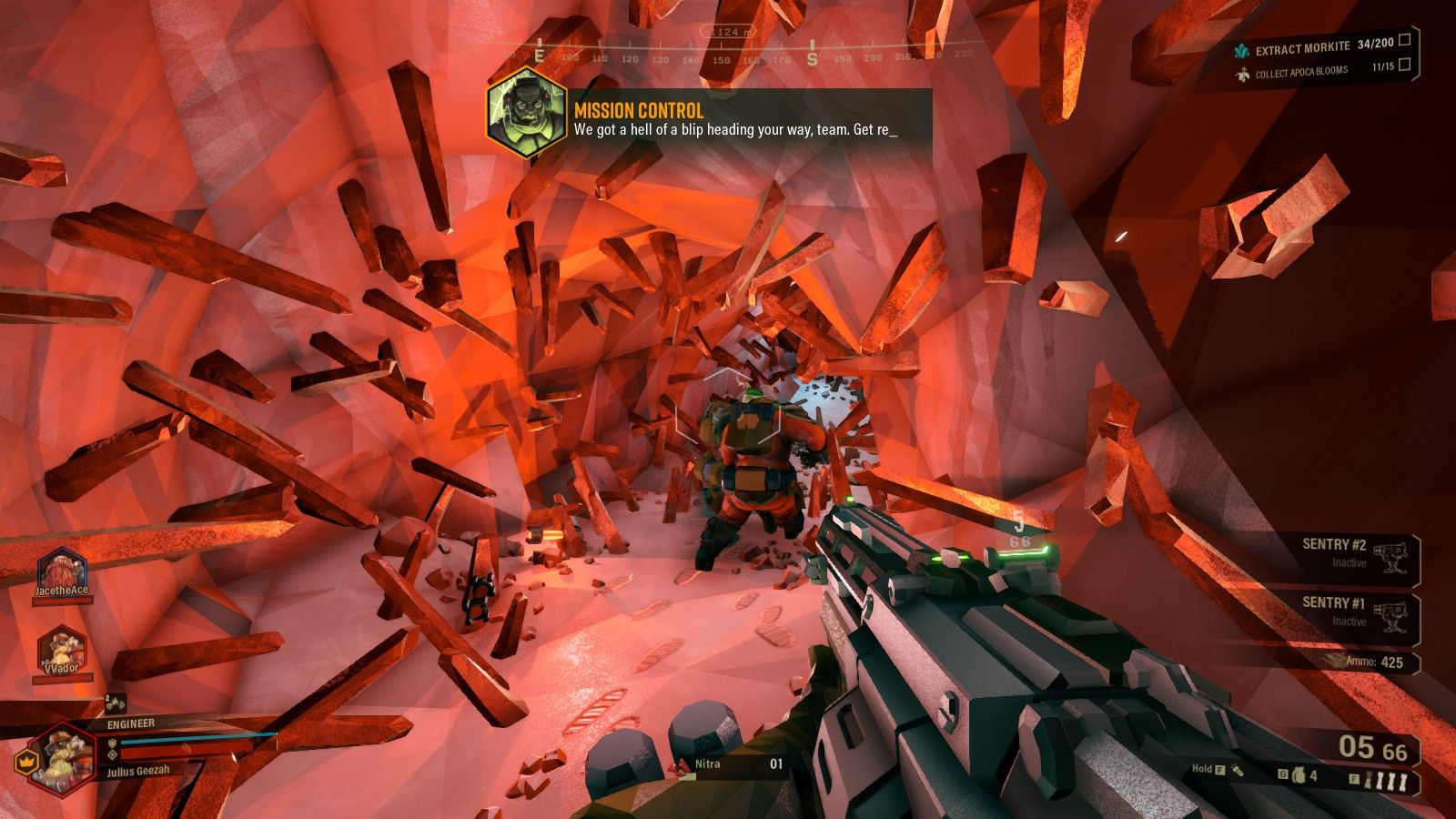
“This is fun” the scout shouts, mining the same mineral he has a thousand times before. It’s that same cycle of compulsive busywork and sugary serotonin rewards that would seem cynical in a lesser game, but is given enough context by what surrounds it to make it feel considered. I’m not sure I want hitting gems with a pickaxe over and over again to feel as satisfying as it does, but I can’t blame the game for that, and I certainly can’t accuse it of not making me feel like I’m in character.
I could criticise the procgen for occasionally churning out some obnoxiously complex levels, but this is part and parcel with so much of what makes them interesting. I could also hope for a bit more variety in mission objectives, but there’s so much of it available in approach that it does little to dampen the experience. I’m also not convinced all classes are created equal, with the Engineer feeling like the best solid all round option to the other three situational classes, and the Driller gifted the neatest looking toys in consideration of the fact that he’s a bit useless, actually.
That said, it’s a winner. Sixteen tons of detail, sixteen tons of character, sixteen tons of riotous bug blasting, spelunking co-operative goodness. Deep Rock Galactic is a company I’ve got no qualms about selling my soul to for hours more to come.







